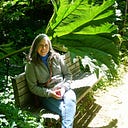Member-only story
Gardening with Children: Forcing Holiday Bulbs
For fifteen years, I held monthly garden club meetings with elementary school children. This is the start of a recurring series on the topics we covered.
Do you want a great project to do with children for the holidays? If you start now, you’ll have some beautiful flowers for the New Year!
Flower Bulbs are unique plant structures. They contain everything the bulb needs for a full growing season. Bulbs such as paperwhites and amaryllis will grow and bloom without being placed in soil. They just need exposure to sunlight, warmth, and water. I’ll come back to how we planted flower bulbs easily with a classroom-sized group of students for them to take home for the holidays.
When I taught this unit in the after-school garden club we first covered what plant structures are contained in a flower bulb. I always started with information that would both inform and interest the children, before going on to an activity. They were like little sponges soaking up all the new facts and being amazed at all our natural world has to offer.
